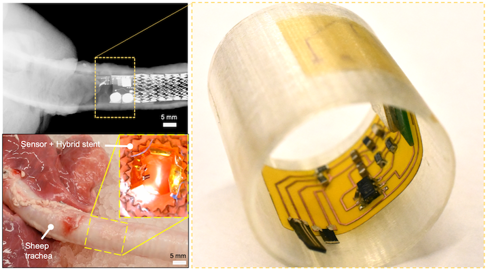The robotic device can better detect infection, airway obstruction or the severity of diseases like Cystic Fibrosis or lung cancer.
The technology can detect the viscosity and layer thickness of the mucus - which is a biomarker for disease severity.
“The sensing mechanism for mucus viscosity leverages external magnetic fields to actuate a magnetic artificial cilium and sense its shape using a flexible strain-gauge,” the researchers wrote. “Additionally, we report an artificial cilium with capacitance sensing for mucus layer thickness, offering unique self-calibration, adjustable sensitivity, and range, all enabled by external magnetic fields generated by a wearable magnetic actuation system.”
Testing was completed by deploying the sensors with an airway stent within an artificial and sheep trachea. The device can then provide real-time monitoring of mucus conditions and provide stent patency alerts - supporting early intervention and personalised care.
Current methods of monitoring mucus or airway conditions rely on computational tomography imaging and bronchoscope inspections which poses risk due to radiation and a lack of real-time feedback outside of hospitals.
The researchers noted the importance of timely interventions in human airway monitoring, especially when stents are inserted into the central airway of a patient with serious diseases.
Assistant professor of mechanical engineering Xiaoguang Dong lead the research team.













